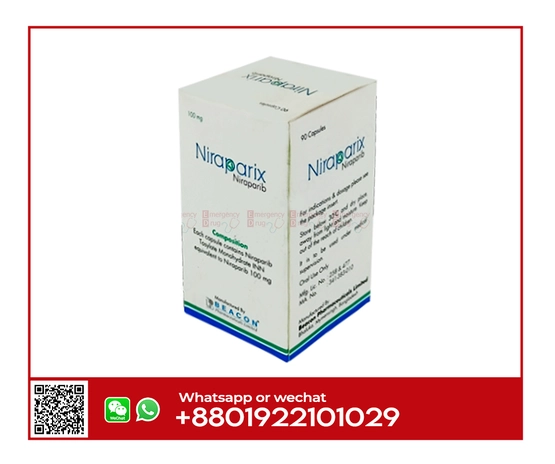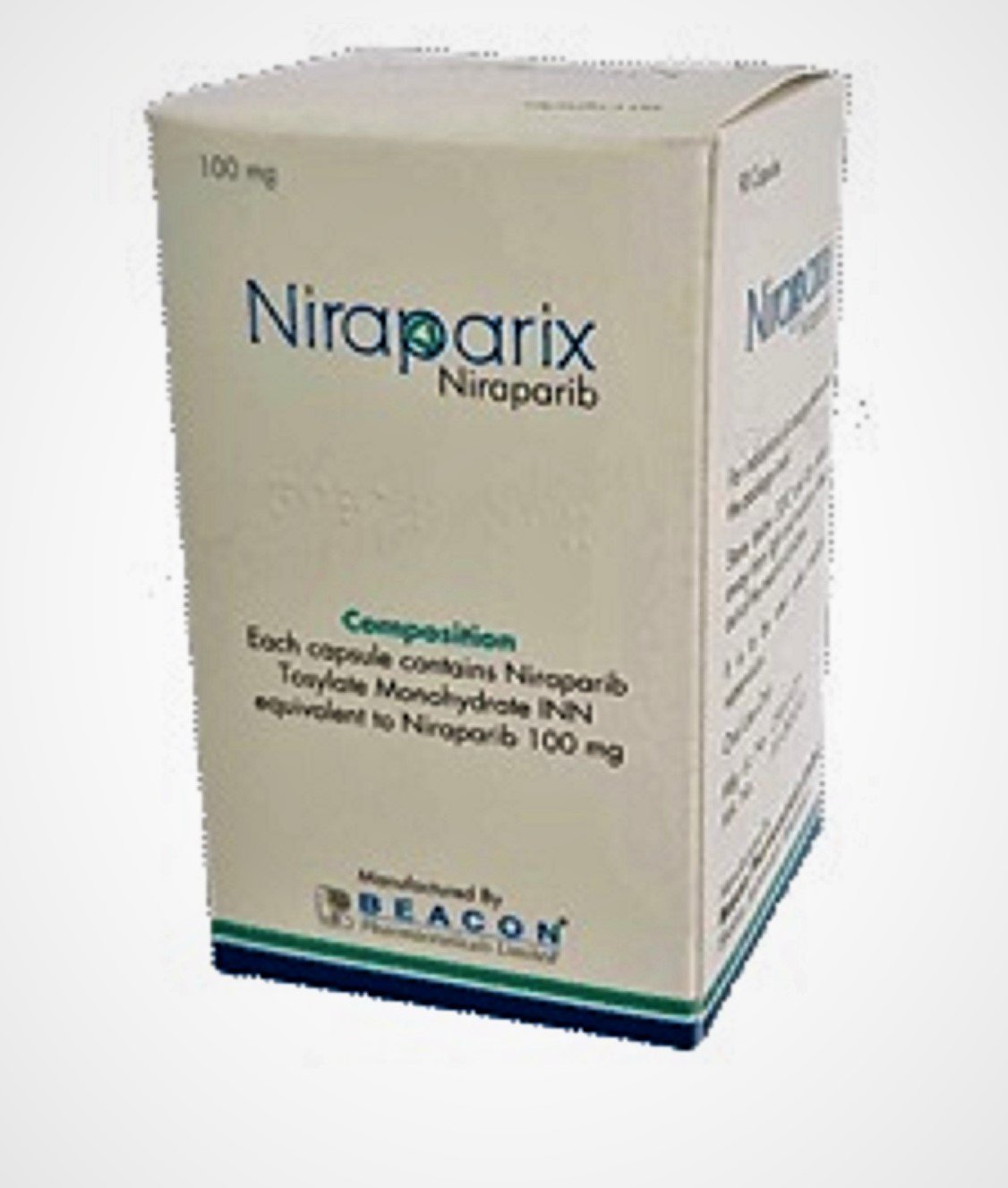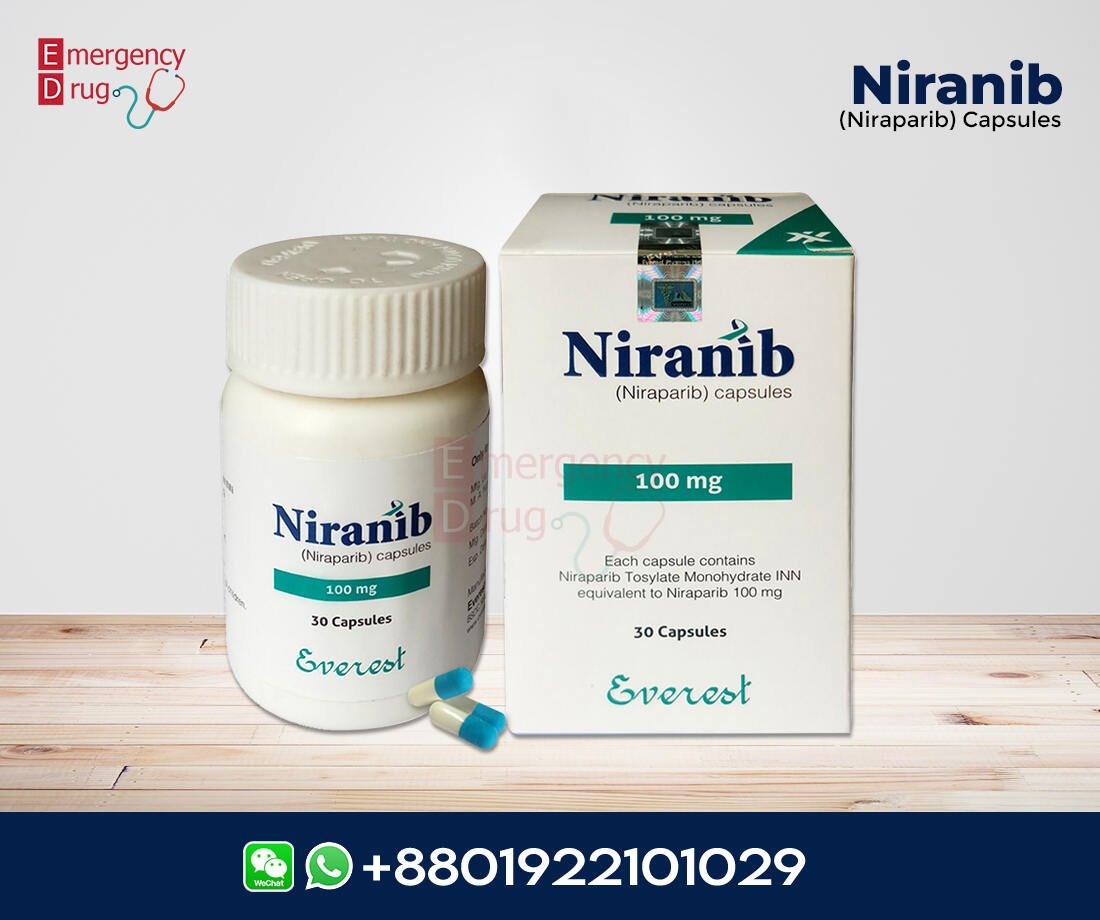Description
Niraparib (Niraparix) indicate for the maintenance treatment of adult patients with recurrent epithelial ovarian, fallopian tube, or primary peritoneal cancer who are in a complete or partial response to platinum-based chemotherapy.
Product Features
| Product Name | : | Niraparix |
| Generic Name | : | Nirapanib |
| Formulation | : | Capsule |
| Available Pack Size | : | 90’s Pot |
| Available Strength | : | 100 mg |
| Registrations | : | Export Only |
Dosage and Administration Niraparib
Recommended Dosage
The recommended dose of Niraparix as monotherapy is 300 mg (three 100 mg capsules) taken orally once daily. Instruct patients to take their dose of Niraparib at approximately the same time each day.Each capsule should swallowed whole. Niraparix need to take with or without food. Bedtime administration may be a potential method for managing nausea. Patients should start treatment with this Capsule no later than 8 weeks after their most recent platinum containing regimen.
Niraparib treatment should continued until disease progression or unacceptable toxicity. In the case of a missed dose of Niraparix, instruct patients to take their next dose at its regularly scheduled.
Warnings and Precautions
Myelodysplastic Syndrome/Acute Myeloid Leukemia
Myelodysplastic Syndrome/Acute Myeloid Leukemia (MDS/AML), including cases with fatal outcome report in patients who receive Niraparix. In Trial 1 (NOVA), MDS/AML occurred in 5 out of 367 (1.4%) of patients who receive Medicine and in 2 out of 179 (1.1%) patients who received placebo. Overall, MDS/AML has reported in 7 out of 751 (0.9%) patients treated with Capsule in clinical studies.
The duration of Niraparix treatment in patients prior to developing MDS/AML varied from 1 month to 2 years. All patients had received previous chemotherapy with platinum and some had also received other DNA damaging agents and radiotherapy. Discontinue Niraparib if MDS/AML after confirmation.
Bone Marrow Suppression
Hematologic adverse reactions (thrombocytopenia, anemia and neutropenia) have reported in patients treated with Niraparix. Grade _3 thrombocytopenia, anemia and neutropenia reported, respectively, in 29%, 25%, and 20% of patients receiving Niraparib. Discontinuation due to thrombocytopenia, anemia, and neutropenia occurred, respectively, in 3%, 1%, and 2% of patients. Do not start until patients recover from hematological toxicity caused by previous chemotherapy (Grade 1).
Monitor complete blood counts weekly for the first month, monthly for the next 11 months of treatment, and periodically after this time. If hematological toxicities do not resolve within 28 days following interruption, discontinue Niraparix, and refer the patient to a hematologist for further investigations, including bone marrow analysis and blood sample for cytogenetics.
Cardiovascular Effects
Hypertension and hypertensive crisis have reported in patients treated with Niraparix. Grade 3-4 hypertension occurred in 9% of Niraparix treated patients compared to 2% of placebo treated patients in Trial 1. Discontinuation due to hypertension occurred in 1% of patients.
Monitor blood pressure and heart rate monthly for the first year and periodically thereafter during treatment. Closely monitor patients with cardiovascular disorders, especially coronary insufficiency, cardiac arrhythmias, and hypertension. Medically manage hypertension with antihypertensive medications and adjustment of the Tablet dose.
Pharmaceutical Information
- Storage condition
- Store below 300C and dry place, away from light and moisture. Keep out of the reach of children.
- Presentation & Packaging
- Niraparix Capsule: Each Commercial box contains 90 capsules in a HDPE pot.
For more Oncology medicine, visit our SHOP









Reviews
There are no reviews yet.